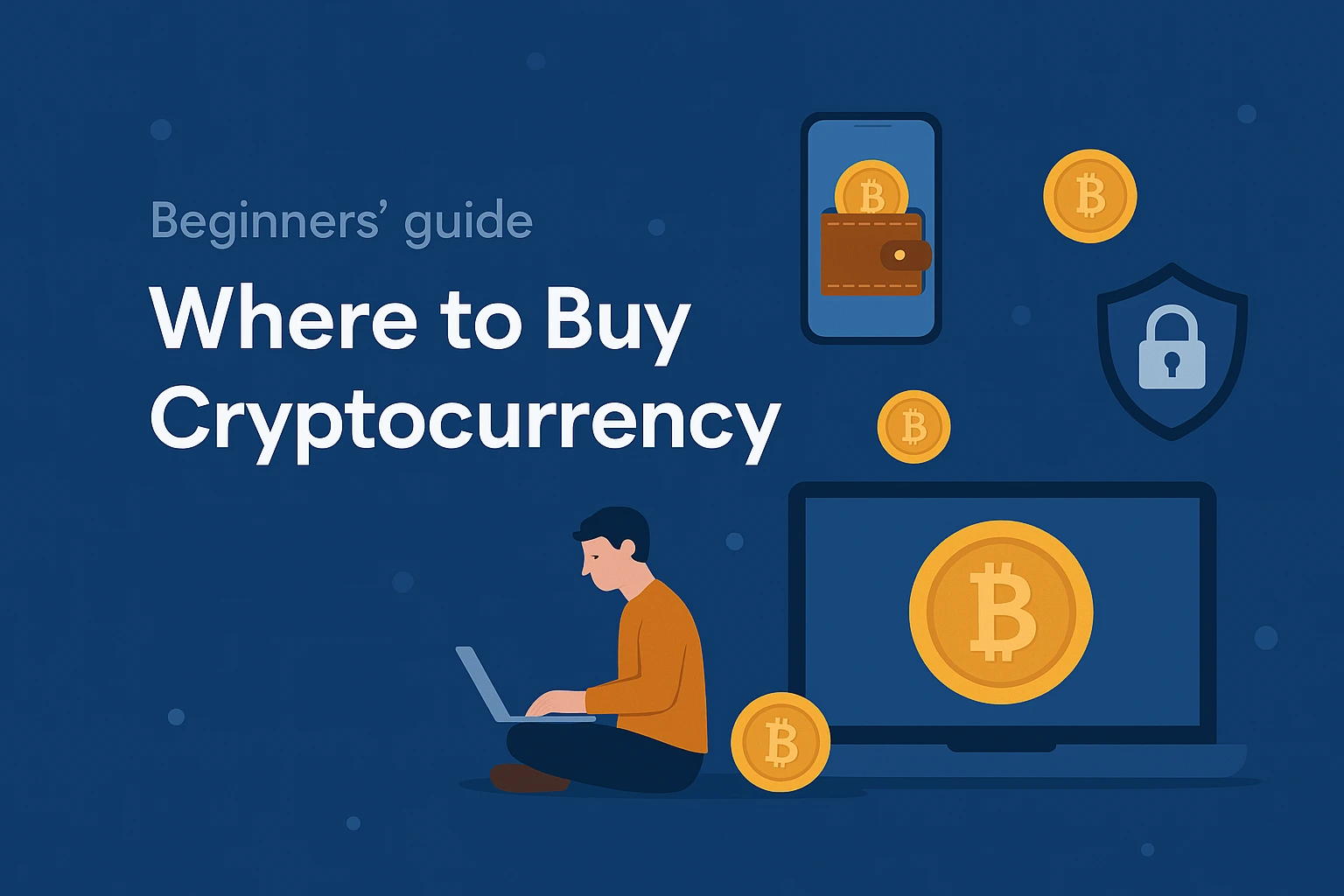Cryptocurrency has grown from a niche concept into a mainstream investment option. For beginners, the idea of buying digital coins like Bitcoin or Ethereum may sound exciting — but the process can seem complex at first. The good news is that buying cryptocurrency in 2025 is easier and safer than ever before, thanks to beginner-friendly platforms and improved educational resources. This guide walks you through where and how to buy crypto, how to store it, and what you need to know before investing.
Getting Started: What You Need to Know First
Before diving into crypto trading, it’s essential to understand what you’re buying. Cryptocurrencies are digital assets secured by blockchain technology — decentralized ledgers that prevent fraud and make transactions transparent. The two most popular coins for beginners are Bitcoin (BTC) and Ethereum (ETH), due to their strong market presence and trust.
However, while the potential for profit is high, so are the risks. Cryptocurrency markets are known for their volatility, which means prices can change dramatically within hours or even minutes. That’s why it’s important to start small, use reputable platforms, and understand the basic mechanics of crypto investing.
Best Platforms to Buy Crypto for Beginners
One of the most common questions beginners ask is, “Where should I buy crypto?” There are many platforms to choose from — each with its pros and cons.
Coinbase is widely considered the easiest way for new users to buy, sell, and hold cryptocurrencies. Its clean interface and educational tools make it an excellent starting point. The only drawback is that Coinbase charges relatively high fees compared to other exchanges.
Another top pick is Cash App, which allows users to buy and withdraw Bitcoin directly to a private wallet — something Robinhood still does not offer. This withdrawal ability is important if you want to truly own your Bitcoin and store it securely.
For those who are slightly more advanced but still want a beginner-friendly experience, Kraken and Gemini offer a balance between simplicity and functionality. They also support a wider range of coins and advanced order types if you decide to level up your trading game.
Keeping Your Crypto Safe: Wallets Explained
Buying crypto is just the beginning. Where and how you store it matters even more. Many platforms offer built-in wallets, but for better security, you may want to use a private wallet.
Hot wallets are connected to the internet and are easier to access — examples include mobile wallets like Trust Wallet or browser extensions like MetaMask. These are great for convenience but can be vulnerable to hacks if not protected properly.
On the other hand, cold wallets, like hardware devices from Ledger or Trezor, are offline and much more secure. These are best suited for long-term investors who want peace of mind. If you’re planning to hold onto your crypto for years, investing in a hardware wallet is a wise decision.
Some beginners also use paper wallets, where private keys are printed and stored offline. While very secure, they’re not user-friendly and can be easily lost or damaged.
Understanding the Buying Process
Once you’ve chosen a platform, you’ll need to create an account, verify your identity (KYC), and fund it using a payment method such as a bank transfer, debit card, or even PayPal. Most exchanges offer simple “Buy” buttons that allow you to purchase crypto in just a few clicks.
But remember: your investment doesn’t truly belong to you unless you move it off the exchange and into a wallet where you control the private keys. That’s why many in the crypto community say, “Not your keys, not your coins.”
Other Ways to Gain Crypto Exposure
If directly buying coins feels intimidating, you can still participate in the crypto economy. Some brokerages and apps allow indirect exposure by investing in companies that hold cryptocurrencies or use blockchain technology.
For example, you could invest in companies like Tesla or MicroStrategy, or choose a crypto ETF that tracks a basket of digital assets. While this won’t give you direct access to the coins, it offers a safer, regulated way to benefit from the industry’s growth.
You can also earn small amounts of crypto for free by participating in learn-to-earn programs. Platforms like Coinbase Learn offer rewards in crypto for watching videos and taking quizzes — a fun and educational way to start building your portfolio.
Final Thoughts for Beginners
Cryptocurrency is a revolutionary financial tool, but like any investment, it comes with risks. For beginners, the best approach is to start small, educate yourself constantly, and always use platforms and wallets that prioritize security, transparency, and ease of use.
Don’t get distracted by hype coins or promises of quick riches. Stick with trusted platforms, diversify your holdings, and think long-term. Whether you’re buying your first Bitcoin or exploring Ethereum smart contracts, you’re participating in one of the most exciting financial innovations of our time.

Unapologetic social mediaholic. Professional webaholic. Beer scholar. Avid travel junkie. Incurable crypto geek.
